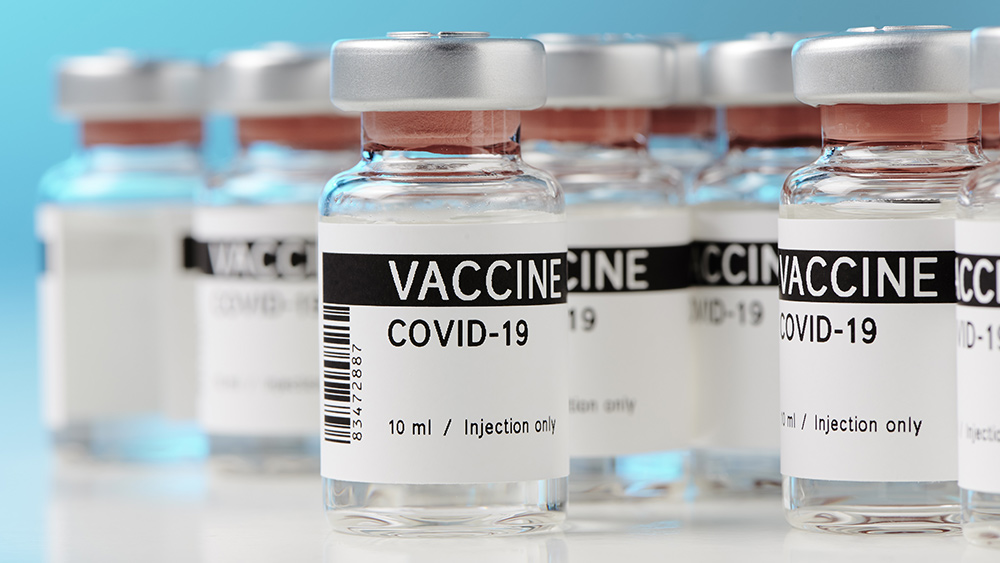Study reveals standard heart attack treatment has “potentially damaging effects”
05/19/2022 / By Zoey Sky

A study published in the Journal of the American College of Cardiology and conducted by researchers from the Indiana University School of Medicine has found that standard treatment methods used to prevent muscle damage during a heart attack aren’t always effective.
What happens after a heart attack?
A heart attack occurs when the blood vessel, or coronary artery, supplying oxygen to your heart gets blocked. In heart attack patients, the amount of permanently damaged heart muscle is directly linked to “how much time elapses between the onset of heart attack symptoms and when the blockage is opened up.”
The more damage there is, the higher the risk of complications like heart failure following a heart attack. This means treatment for heart attack focuses on opening up the coronary arteries as quickly as possible via reperfusion, often with a stent.
A stent is a tiny tube that a doctor inserts into a blocked passageway to keep it open. The stent helps restore the flow of blood or other fluids, depending on where it’s placed.
Stents are either metal or plastic. They can also be coated with medication to help keep a blocked artery from closing. According to common belief, once the coronary arteries are opened, damage to the heart muscle is stopped.
Reperfusion and muscle damage
Rohan Dharmakumar, lead researcher and executive director of the Krannert Cardiovascular Research Center at IU School of Medicine, said that isn’t always the case.
In the study, the researchers found that if reperfusion results in internal bleeding or hemorrhage within the heart muscle, the muscle will continue to die even after the culprit coronary artery is opened.
Data suggests that hemorrhage occurs in the heart muscle of at least 50 percent of all heart attack patients who undergo reperfusion. For the study, the research team tried to understand what effect that internal bleeding has on progressive heart muscle damage following reperfusion.
The researchers analyzed blood samples from heart attack patients taken before and after they received reperfusion therapy. Through cardiac magnetic resonance imaging (cardiac MRI), the experts noninvasively identified which patients experienced hemorrhage within their heart muscle after reperfusion.
Troponin, a key protein, often increases with heart muscle damage. According to the study, patients with heart muscle hemorrhage have much higher levels of troponin than patients without hemorrhage.
The researchers also used a large animal model to confirm that hemorrhage is directly involved in the extent of infarction after reperfusion. They used serial cardiac MRIs to noninvasively track infarct size in animals with and without hemorrhage.
Similar findings to those seen in patients suggest that the team can use the animal model to develop new treatments to reduce hemorrhage in patients. (Related: Drinking tea regularly linked to reduced cardiovascular disease risk.)
The effects of reperfusion therapy
Dharmakumar warned that the study proves how infarct size is determined by both restricted blood supply to the heart and the effects of reperfusion therapy.
In some cases, the introduction of hemorrhage within the at-risk area might completely cancel out the benefits of reperfusion therapy. Dharmakumar added that it’s important for physicians to know more about the role reperfusion can have in muscle death since it can help them provide better treatment to patients in the future.
While doctors might not be able to do much to address the lost time before a patient arrives at the hospital, knowing how to effectively minimize the effects of hemorrhage after reperfusion can give them “a new opportunity to reduce the size of infarction, and downstream negative consequences” in at least half a million heart attack patients in the U.S. alone, advised Dharmakumar.
Dharmakumar said his team will expand the findings to a larger patient population. The researchers will continue their work to have greater insight into how hemorrhage drives the expansion of infarction and develop testing strategies to prevent the effects of those hemorrhages.
Visit Heart.news for more studies concerning heart health.
Watch the video below to learn how fresh watermelon juice can help boost your heart health.
This video is from the Groovy Bee channel on Brighteon.com.
More related stories:
Drinking enough water each day may reduce your long-term risk for heart failure.
Omega-3 fatty acids are the ALPHA when it comes to healthy fats.
Sources include:
Submit a correction >>
Tagged Under:
discoveries, heart attack, heart disease, heart health, hemorrhage, internal bleeding, muscle damage, reperfusion, reperfusion therapy, research, surgery
This article may contain statements that reflect the opinion of the author
RECENT NEWS & ARTICLES
COPYRIGHT © 2017 DISCOVERIES NEWS




















